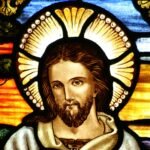Introduction to Pentecostalism and Its Beliefs
Pentecostalism is a vibrant and influential movement within Christianity that has gained significant popularity in the 20th and 21st centuries. It is characterized by its emphasis on the work of the Holy Spirit and the belief in the baptism of the Holy Spirit. Pentecostals believe in the authority of the Bible and its teachings, but they also place a strong emphasis on personal experience with God.
Pentecostals believe that the baptism of the Holy Spirit is a distinct experience from salvation. This experience is often accompanied by speaking in tongues, which is seen as evidence of the Holy Spirit’s presence. Speaking in tongues is considered a spiritual gift and is believed to enable believers to communicate with God in a language unknown to them.
Another distinctive feature of Pentecostalism is the belief in divine healing. Pentecostals believe that God can and does heal people of physical, emotional, and spiritual ailments. They often practice laying on of hands and anointing with oil as a means of invoking God’s healing power. This belief in divine healing is grounded in the biblical teachings of Jesus’ ministry of healing and the examples of healing found throughout the New Testament.
Pentecostals also emphasize the gifts of the Holy Spirit, which include prophecy, healing, miracles, and discernment. These gifts are believed to be available to all believers and are seen as a means of edifying the church and advancing the kingdom of God.
It’s important to note that while Pentecostalism is a broad movement with various denominations and expressions, there are some core beliefs that are common among Pentecostals. These include the belief in the Trinity (God the Father, Son, and Holy Spirit), the deity of Jesus Christ, salvation by grace through faith, and the second coming of Christ.
The Azusa Street Revival
A significant event in the history of Pentecostalism is the Azusa Street Revival, which took place in Los Angeles, California, in the early 1900s. The revival, led by African-American preacher William J. Seymour, lasted for several years and attracted people from diverse racial and social backgrounds.
The Azusa Street Revival is considered the birthplace of modern Pentecostalism and is credited with spreading the movement across the United States and eventually around the world. It emphasized the experience of the Holy Spirit, including speaking in tongues and other spiritual gifts, and paved the way for the growth and development of Pentecostal churches and denominations.
The Global Impact of Pentecostalism
Pentecostalism has experienced tremendous growth and has become one of the fastest-growing religious movements globally. It has gained significant influence in regions such as Africa, Latin America, and parts of Asia.
One of the reasons for its rapid growth is its appeal to people seeking a direct and personal experience with God. Pentecostalism’s emphasis on the power of the Holy Spirit, healing, and spiritual gifts resonates with individuals searching for a deeper, more experiential faith.
Furthermore, Pentecostalism’s emphasis on the supernatural and its focus on addressing the practical needs of individuals and communities have made it particularly attractive in contexts where poverty, social inequality, and injustice are prevalent. Many Pentecostal churches engage in extensive social outreach programs, providing aid, education, and support to those in need.
History of Pentecostalism
Pentecostalism, a vibrant and dynamic movement within Christianity, has a rich and diverse history that spans over a century. This section will explore the early roots of Pentecostalism, key figures in its history, and the worldwide spread of this influential movement.
Early Roots of Pentecostalism
Pentecostalism emerged in the late 19th and early 20th centuries as a reaction to formalism and spiritual stagnation within established Christian denominations. It can be traced back to the Azusa Street Revival, which took place in Los Angeles, California, from 1906 to 1909. Led by African-American preacher William J. Seymour, this revival sparked a fervent outpouring of the Holy Spirit, marked by speaking in tongues, divine healing, and other spiritual manifestations.
**The Azusa Street Revival** became a catalyst for the spread of Pentecostalism, attracting multiracial and multicultural believers from various backgrounds who sought a deeper experience of God’s power and presence. It also played a pivotal role in breaking down racial barriers within the Church, as people from different ethnicities worshiped together in unity.
Key Figures in the History of Pentecostalism
Several key figures have shaped the history of Pentecostalism with their teachings, ministries, and contributions to the movement. One such figure is Charles Parham, an American preacher who is often considered the father of Pentecostalism. Parham emphasized the baptism of the Holy Spirit as a distinct experience subsequent to conversion and believed in the evidence of speaking in tongues as a sign of this baptism.
Another influential figure is Aimee Semple McPherson, a renowned evangelist and the founder of the International Church of the Foursquare Gospel. McPherson’s dynamic preaching, healing ministry, and innovative use of media brought Pentecostalism into the mainstream and attracted millions of followers worldwide.
Spread of Pentecostalism Worldwide
**Pentecostalism quickly spread** beyond the borders of the United States and gained traction in various parts of the world. Missionaries and evangelists carried the Pentecostal message to different continents, fueling the growth of Pentecostal churches and movements. In South America, for example, Pentecostalism experienced significant growth, with Brazil becoming one of the largest Pentecostal nations.
**Africa** has also seen remarkable growth in Pentecostalism, with many African countries having a high percentage of Pentecostal believers. The movement resonated with Africans, offering hope, spiritual empowerment, and a sense of community. Today, Pentecostal churches in Africa continue to thrive and play a significant role in shaping the religious landscape of the continent.
**Asia** has not been immune to the influence of Pentecostalism either. Countries like South Korea, India, and the Philippines have witnessed the rise of vibrant Pentecostal movements, impacting millions of lives and contributing to the growth of Christianity in these regions.
Pentecostalism’s global reach is a testament to its appeal and relevance in diverse cultural contexts. Its emphasis on personal experience, spiritual gifts, and the power of the Holy Spirit has resonated with believers seeking a deeper encounter with God.
Different Denominations and their Beliefs
Within the broader umbrella of Pentecostalism, there are several distinct denominations that have their own unique beliefs and practices. Let’s take a closer look at three prominent Pentecostal denominations: Assemblies of God, Church of God in Christ, and International Church of the Foursquare Gospel.
Assemblies of God
The Assemblies of God is one of the largest Pentecostal denominations in the world, with millions of members spread across more than 200 countries. Founded in 1914 in the United States, the Assemblies of God places a strong emphasis on the spiritual gifts mentioned in the Bible, particularly the gift of speaking in tongues. They believe in the full inspiration and authority of the Bible and emphasize the importance of personal salvation through faith in Jesus Christ.
One interesting aspect of Assemblies of God is their commitment to missions. They have a fervent dedication to spreading the gospel worldwide and have established numerous Bible schools and training centers to equip ministers and missionaries. Additionally, they have a strong focus on social issues, such as poverty alleviation and disaster relief, demonstrating their commitment to serving their communities.
Church of God in Christ
The Church of God in Christ (COGIC) is another significant Pentecostal denomination, primarily composed of African-American believers. It was founded in 1907 and has grown to be one of the largest Pentecostal denominations in the United States. COGIC places a high value on the experience of the Holy Spirit, emphasizing the power and presence of God in their worship services.
One notable aspect of COGIC is its strong emphasis on holiness and sanctification. Members are encouraged to live holy lives, free from sin, and to pursue righteousness. The denomination is known for its vibrant worship, with energetic singing, dancing, and expressions of spiritual gifts. COGIC has also been influential in the Civil Rights Movement, with many of its leaders actively participating in the fight for racial equality.
International Church of the Foursquare Gospel
The International Church of the Foursquare Gospel, commonly known as Foursquare Church, was founded by Aimee Semple McPherson in 1923. This denomination places a strong emphasis on the fourfold ministry of Jesus Christ as the Savior, Baptizer with the Holy Spirit, Healer, and Coming King. Foursquare Church believes in the authority and inerrancy of the Bible and seeks to bring a balanced approach to both evangelism and spiritual growth.
Foursquare Church is known for its commitment to creativity and innovation in worship. They embrace a variety of musical styles and artistic expressions, seeking to engage people in a meaningful and relevant way. Another distinctive aspect of Foursquare Church is its focus on community involvement and outreach. They actively seek to meet the practical needs of their communities through various social programs and initiatives.
In conclusion, these three denominations—Assemblies of God, Church of God in Christ, and International Church of the Foursquare Gospel—represent the diversity within the Pentecostal movement. While they share a common belief in the power and presence of the Holy Spirit, each denomination brings its own unique perspectives, practices, and contributions to the body of Christ.

Rockin’ the faith, one verse at a time!
Growing up, the Bible’s stories deeply impacted me. Now, with over 15 years of preaching experience, I blend timeless teachings with modern technology, making them relevant for today’s world.
Bible Hub Verse is my platform to share historical insights and thought-provoking articles, exploring both familiar and uncommon Christian topics. My passion is building a welcoming online space for everyone to learn, grow in their faith, and discover the Bible’s enduring message.
Join the journey!
God bless you.







